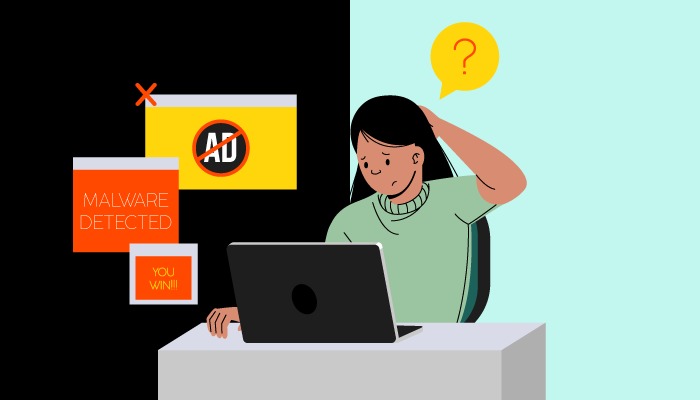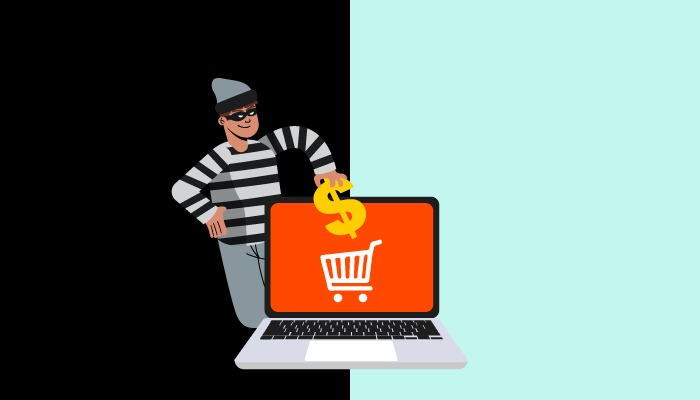
The e-commerce market has been in a state of panic ever since the latest government guidelines regarding dark patterns have come into the picture.
On November 30th, 2023, the Central Consumer Protection Authority (CCPA) made a bold move to dismantle deceptive design practices prevalent in various businesses.
The use of dark patterns to mislead customers has been on an alarming rise in recent years.
Many businesses, regardless of their scale, jumped on the bandwagon, employing deceiving tactics left, right, and center for commercial gains. Common dark patterns, such as bait and switch and scarcity, have been utilized by major brands, including giants like Amazon, Google, Meta, and Apple.
In light of these growing concerns, the government has taken strict action, banning 13 dark patterns to protect customers from being misled. Compliance with these guidelines is now crucial. Non-compliance will lead to severe consequences.
Read on to learn everything you need to know about dark patterns, the impact of the ban, and what action steps you should take to navigate this ban.
Understanding Dark Patterns
Dark patterns, also known as deceptive patterns, are deceiving design tactics to trick customers into taking actions they do not intend to take.
These actions are mostly not in favor of customers’ best interests and are employed by businesses for their profit. Deceptive design patterns exploit users’ trust by not being transparent and forcing them to act against their will.
These can range from misleading users to subscribing to a newsletter to tricking them into buying additional goods by sneaking products into their carts.
Now that you understand what dark patterns are, let us have a look at what CCPA is and the latest regulations banning dark patterns.

What is CCPA and What do the CCPA Guidelines State?
The Central Consumer Protection Authority (CCPA) is the governing body for the protection and promotion of consumer rights in India.
CCPA has recently issued guidelines on the prevention and regulation of Dark Patterns under The Consumer Protection Act, of 2019. These guidelines have been issued to curb misleading design practices, safeguard customers’ interests, and empower them to make more informed decisions.
They prohibit the use of 13 dark patterns used to trick customers. And urge businesses to make use of customer-centric and ethical strategies to increase sales and customer retention.
All these regulations will apply to all goods and service providers, advertisers, and sellers such as E-commerce platforms, apps, and websites in India. Navigating these regulatory changes can be a tough nut to crack. A deep understanding of user-centric design is crucial for replacing these dark patterns from your platform and implementing ethical design.
We at f1tudioz, have more than a decade’s worth of expertise in crafting user-centered design brilliance. Our highly skilled and top-notch UI/UX designers are ready to be a valuable ally in making your platforms comply with CCPA’s ethical design standards.
Contact us at f1Studioz.com to be CCPA compliant and boost your user experience through exceptional and ethical design.
The 13 Prohibited Dark Patterns

Let us have a look at the 13 dark patterns that have been banned.
False Urgency
Businesses employ false urgency tactics to manipulate users into purchasing by making them believe that products are scarce. All the limited-time offers, and limited stock offers fall under the false urgency category.
Most of the e-commerce businesses employ this tactic as part of their sales strategy to boost conversion.
Booking.com was one of the brands that used this dark pattern heavily to get users to book their listings.
Forced Action
Forced action involves providing customers with desired benefits under the condition that they perform specific actions in return. Access to certain functionalities is restricted until customers complete a designated action.
This manipulation is often disguised as an optional step through the use of confusing language and a deceptive visual interface.
LinkedIn was one of the brands that has used this dark pattern in the past.
Basket Sneaking
Basket sneaking involves making customers buy more products than they intended to by sneakily adding extra products to their shopping carts without their explicit permission.
Because of this tactic, the customer ends up paying extra money at the time of checkout.
Zomato used this dark pattern to sneak “charitable cause” into our orders’ payment.
Subscription Trap
A subscription trap entails hiding subscription cancellation options or making the cancellation process too complex and lengthy for the user.
It might also include asking the user to authorize autopay or provide payment details even to avail of a free subscription.
Figma uses this dark pattern- when sharing a design, it triggers a dialog, silently generating subscriptions for recipients, frequently resulting in user complaints.
Confirm Shaming
Confirm shaming is used to trigger uncomfortable feelings like shame, fear, guilt, or ridicule in the minds of the customers to manipulate their decision-making capabilities.
The main objective is to oppress customers’ freedom of choice and make them act a certain way on their platforms that benefit the business.
Duolingo employed this tactic in 2018, displaying its mascot, Duo, crying when users skipped language lessons.
Interface Interference
Interface interference is a type of dark pattern that manipulates the user interface by concealing certain information and highlighting others to trick users into taking unintended actions.
Disguised Advertisement
Just as the name suggests, disguised advertisement involves disguising advertisements as non-sponsored content.
It is used to trick customers into clicking on the ads by masking them as user-generated content, news articles, etc. This practice is most seen on news websites.
News portals like India Today and Economic Times have used disguised advertisements on their websites.
Nagging
Nagging involves continuously spamming the users with requests and interruptions.
It is aimed to irritate the users so that they eventually give in and take action even if they do not want to.
Instagram used this tactic back in 2018 to compel users to turn on notifications.
Bait- and- Switch
Bait-and-switch involves enticing customers with an attractive offer as bait to capture their attention.
Once the customer engages with the offer or makes a purchase, they receive something different or less favorable than what was initially advertised.
The aim of employing this dark pattern is for companies to promote more expensive or less desirable products or services.
Amazon used this dark pattern in the past.
SaaS Billing
Under SaaS billing, businesses exploit acquisition loops to get more customers and make them pay regularly for the service.
Instead of one-time payments, the goal is to establish a continuous revenue stream by collecting payments from customers regularly.
Amazon Prime and Netflix employ this tactic to keep customers subscribed to their services.
Drip Pricing
Drip pricing is the practice of misleading users about the actual price by asking for a higher price during checkout or revealing certain elements of the price later in the user experience.
It can create a sense of frustration and distrust among consumers as they navigate through the purchasing process.
Trick Question
Using the trick question dark pattern, businesses exploit the human tendency to skim through information.
This tactic involves using vague language to mislead users into taking action.
Rogue Malware
Rogue malware involves using scareware or ransomware to manipulate users into thinking their system is infected with a virus.
The aim is to instill fear or urgency, prompting users to download what they believe is a legitimate malware removal tool.
However, the downloaded tool turns out to be malicious software, further compromising the user’s system.
How Will the Ban Impact Businesses

The ban on these design practices will have a severe impact on businesses that heavily rely on them for sales and revenue growth.
Here are the implications that businesses will face following the ban on dark patterns.
Legal Implications
Businesses will have to deal with fines and penalties for not complying with the regulations.
It is crucial to comply with the guidelines to prevent any legal implications that might harm the reputation of your brand.
User Experience Issues
Many businesses might require redesigning certain aspects of their user interfaces.
This might pose a challenge in providing a seamless and engaging user experience during the transition.
Compliance Cost
Complying with the CCPA guidelines might require potential redesign which will lead to businesses facing significant compliance costs.
Decrease in Conversion Rates
Dark patterns were used to trick people into buying a product or service quickly, a ban on them will reduce the rate at which users purchase products and services.
Thus, a short-term decline in conversion rates will be one of the most immediate impacts of the ban.
Decrease in Revenue
Lowering conversion rates will negatively impact revenue and profitability for those businesses that were heavily dependent on conversion optimization using dark patterns.
Increased Cart Abandonment
Dark patterns guided users through the checkout process quickly.
Without them, people might take longer to consider their purchase and might not purchase at all, increasing the cart abandonment rates.
Now that we have an idea about what the ban will entail for businesses, let’s have a look at how to navigate the regulations.
How to Navigate the Challenges
Building a fool-proof ethical strategy is crucial at this point.
Tricking customers is no longer a viable option, given its negative impact on both commercial gains and brand reputation.
It is time to prioritize long-term revenue growth, increase customer loyalty, and provide lasting value.
Here are the action steps to navigate the regulations and challenges.
- Build trust and loyalty by showcasing authenticity and the value that your products and services will add to the lives of your customers.
- Be transparent about the pricing, shipping, return, and privacy policies to prevent cart abandonment and retain customers.
- Understand the wants and preferences of your target audience to make your marketing more effective and attract the right customers who will genuinely benefit from your products or services.
- Showcase genuine customer reviews and testimonials to build loyalty and attract more customers.
- Provide top-notch customer service that makes the customers evangelize your brand.
- Invest in exceptional UX design to provide a seamless, positive, and delightful user experience to the customers.
Implementing these steps will not only help you prevent any legal complications but also help you increase brand loyalty, awareness as well as long-term revenue growth.

Resolve Dark Pattern Issues and Be CCPA Compliant with f1Studioz
Navigating the shift towards CCPA compliance amid the ban on dark patterns is a critical process.
At f1Studioz, we are committed to making this transition seamless for your business.
With a proven track record of delivering exceptional UX/UI design services to renowned brands like Boat, Rapido, ICICI Bank, Unilever, UpGrad, Bajaj Electronics, Clopay, and many more, we bring a wealth of experience to the table.
Our team of experts is dedicated to revamping your design and elevating the user experience, instilling trust, and fostering engagement.
By collaborating with us, you can rest assured that your platform will not only meet but exceed the ethical design standards set by the CCPA.
We take pride in transforming e-commerce spaces into user-centric platforms that resonate with audiences.
Visit f1Studioz.com to discover more about our expertise and how we can assist your business in achieving CCPA compliance while enhancing your brand’s user experience.
Moving to the Light Side: Dealing with CCPA’s Ban on Dark Patterns







